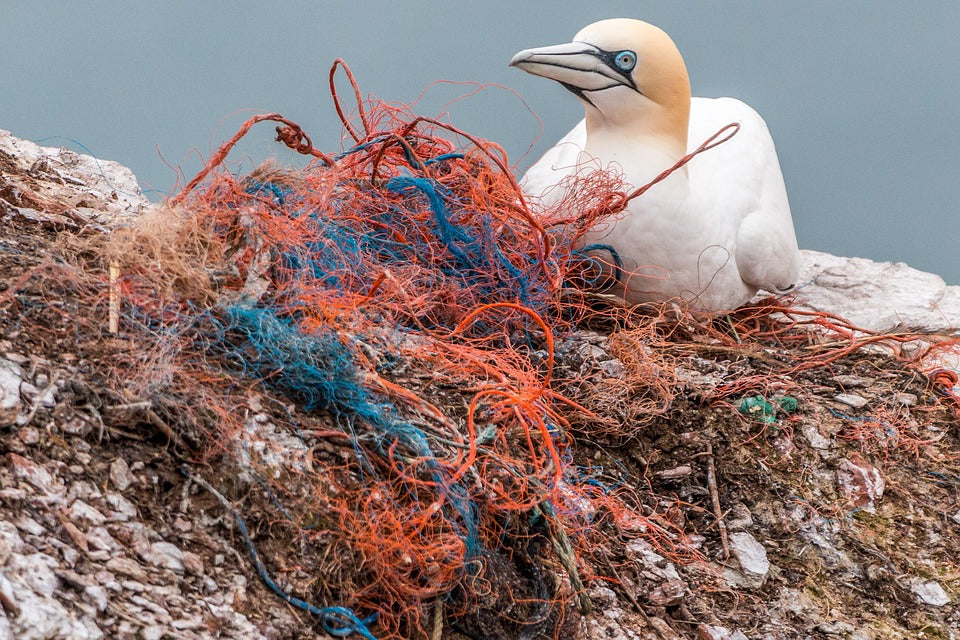The plastic industry has been moving forward at a pace that is hard to keep up with. Over the last 100 years, plastic has evolved into the material we use for everything from water bottles to electronics packaging. Whenever plastic is mentioned, what springs to the minds of many people is its impact on the environment.
It's hard to avoid it. But with each purchase of a non-biodegradable product, we're contributing to an environmental disaster that threatens our health as well as our planet.
If you’re keen on spreading awareness about plastic and its impact on our lives, the following are some of the facts about plastic that you probably didn’t know.
7 Facts About Plastic To Make You Reconsider Plastic Use
Without changing how we live with plastics, it won't be long until the entire world is inhabitable due to plastic pollution. Spreading awareness about pollution is the number one key to managing it. Here are facts about plastic that you need to always remember whenever tempted to use plastic irresponsibly.
The world has 9 billion tons of plastic waste
Plastic is a non-biodegradable material made from fossil fuel-based substances extracted from the earth. While the world has witnessed an increased production and use of plastic, its mass production began as early as the 1950s. Ever since, it’s been rising to take the lead as the world’s most manufactured substance at 9 billion tons, most of which has been produced since 2000.
At the moment, there lies about 6.9 billion tons of plastic lying on the earth as waste and only a small fraction of it has been recycled.
Most plastics in the sea come from Asia
Rivers are the number one polluter of oceans, dumping 1.15 to 2.41 million tons of plastic into the water each year. The top 20 most polluting rivers are responsible for two-thirds of the pollution, with 15 in developing countries—including China, Indonesia, the Philippines, and Vietnam. These rivers account for up to 67 % of the global water body pollution.
With modeling data having uncertainties, it's clear that the only way to make a dent in plastic pollution is to focus on better waste management in developing countries.

90% of sea birds have plastic in their stomachs
The world is so much polluted with plastic that a lot of it ends up in oceans and eventually into the stomachs of seabirds. A study revealed that the increasing plastic waste production will see every seabird have plastic by 2050.
Some of the plastic substances found in these birds include bottle caps, bags, synthetic fiber, and more.
93% of bottled water contains tiny pieces of plastic
According to a study by Orb Media, it’s found that 93 percent of bottled water has minute microplastics. It’s not safe to always rely on plastic bottled water, especially if exposed to heat constantly.
It’s best if you switched to using reusable plastic water bottles, normally made tougher and cannot leach the plastic to the water. An excellent example of this is the Nalgene 32Oz Wide-Mouth Water Bottle, which is BPA-free and dishwasher safe.

It takes 500-1000 years for plastic to biodegrade
Plastic is dangerous because it’s non-biodegradable. It takes 500-1000 years for plastic to biodegrade if it ever does at all! If you can avoid using plastic, do. But if you really need it, recycle, and don’t leave it behind.
For that reason, everyone must play a role in avoiding plastic-made items as much as possible. For instance, you can opt for accessories like wallets made from recycled plastics or avoid plastics altogether by using cool metal wallets, such as the Kryptek Armored Summit Wallet. This wallet is made from steel plates, which makes it durable and can later be recycled when you no longer need it.

Only 8% of plastics are recycled by humans worldwide
Most plastics are only recycled by machines, not by people. This means that only 8% of plastics worldwide are recycled. If we don’t change our habits, there will be more plastic than fish in the ocean by 2050.
For plastic to be recyclable, it must be “thermoset” or “thermoplastic.” Thermoplastics are plastics that can be re-melted and remolded into new products and recycled. Thermoset plastics, on the other hand, can’t be remelted to create other plastic products, hence are non-recyclable.
Coffee cups aren’t recyclable
The outside of a coffee cup is made from paper, not plastic. Still, there\'s a thin layer of plastic inside. The PP film is used to keep your drink from spilling and to keep it from cooling too fast. However, this kind of design makes recycling the product hard.
It can take a long time and a lot of money for a recycling factory to separate and recycle each piece of the cup. As such, it’s not feasible to recycle coffee cups. Therefore, as you grab your metal wallet with money clip to retrieve your card and pay for that coffee, think of the impact the plastic cup brings to the environment.
Conclusion
The first step to reducing the global pollution by plastic is manufacturers being held responsible for every plastic component they produce. They should take the responsibility of ensuring plastics produced are recycled.
As consumers, we also have the responsibility of changing the narrative of plastic pollution by refraining from plastic as much as possible. For instance, to help fight the one-time plastic water bottle menace in seas, we can adopt reusable plastic water bottles.



























































Leave a comment
All comments are moderated before being published.
This site is protected by hCaptcha and the hCaptcha Privacy Policy and Terms of Service apply.